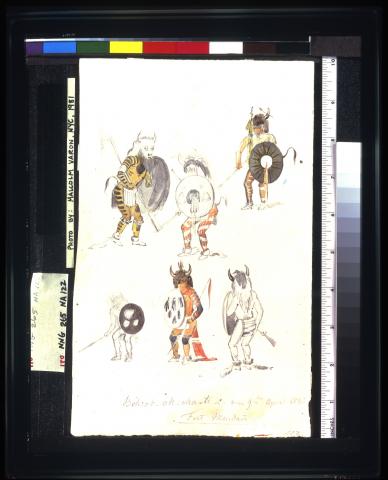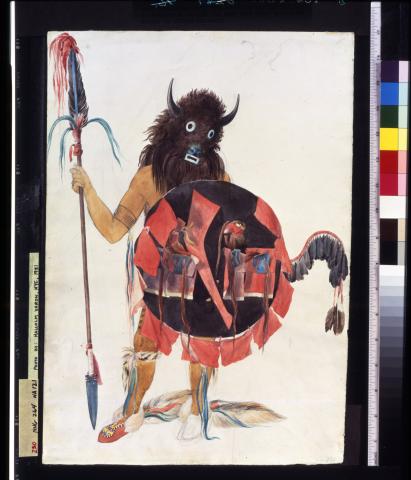November 10, 1833
10 November:M3Temperature at twelve thirty, 41 degrees Fahrenheit [5 degrees Celsius]. In the morning, wind out of north hora 8 west; it was strong; light flurries at the same time; the ground wet. A distinguished Hidatsa warrior called Péhriska-Rúhpa (Two Ravens) visisted us early. He was a big, handsome man who came very often to the fort. We had [met] him and gotten acquainted with him on the Assiniboine. Individual women came to trade.
Every day corn, beaver meat, and beaver pelts were brought in. Because of the competition with the company of Sublette and Campbell, the price of the beavers has been driven up so high now that often a pound of [pelts] costs seven dollars, causing a loss. But to drive out the competition requires a lot of money. The American Fur Company can survive longer than a newly developing company because of its large assets. M4A large beaver pelt weighs two pounds, but there are still heavier ones. The usual price for a pound of beaver pelt is four dollars. Other women pass by, loaded with household goods and utensils that they were bringing to their winter lodges. We saw strange objects, like a buffalo head, artificially stuffed and with iron eye rings (the symbol and sign of the society of the Class of Buffalo, Beróck-Óchatä, 'ro' tongue trilled); a stuffed badger, and so on. Between seven and eight o'clock in the morning, the thermometer had indicated 38°F [3.3°C]. In the afternoon teh raw, strong wind continued.
Today a woman died in Mih-Tutta-Hangkusch, the mother-in-law of Síh-Chidä (Yellow Feather). He came to the fort afterward. His hair and clothes were painted and spotted with white clay.




